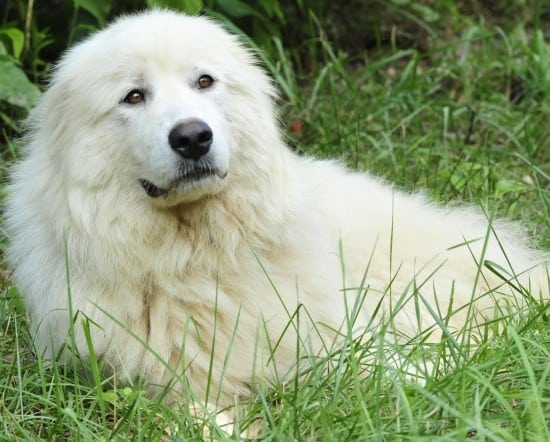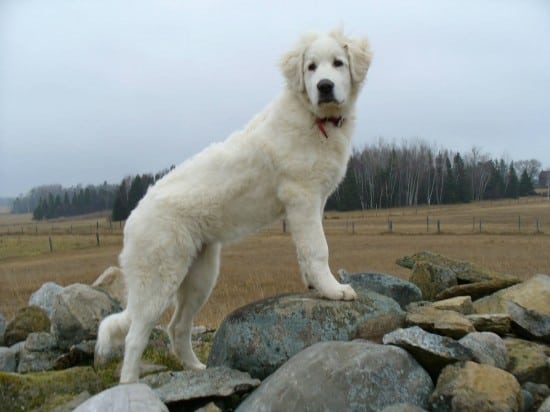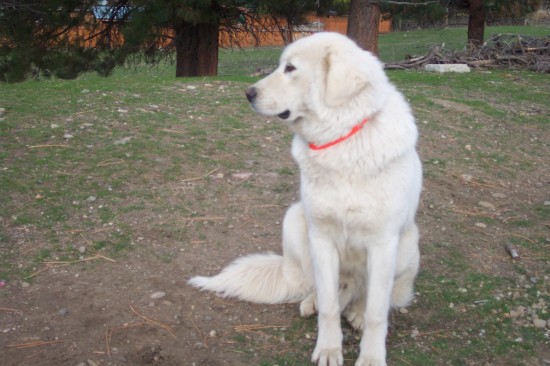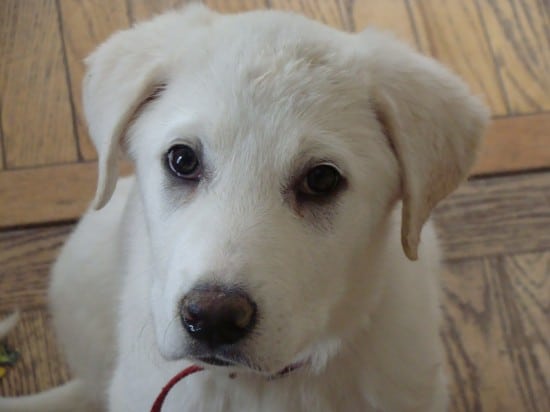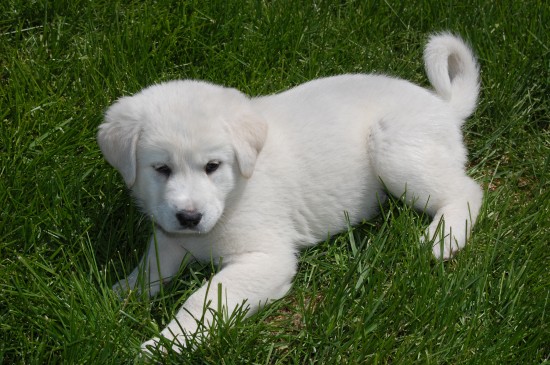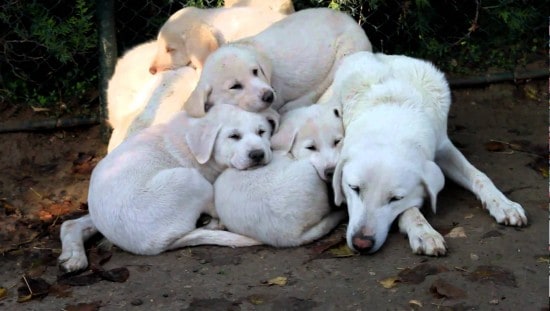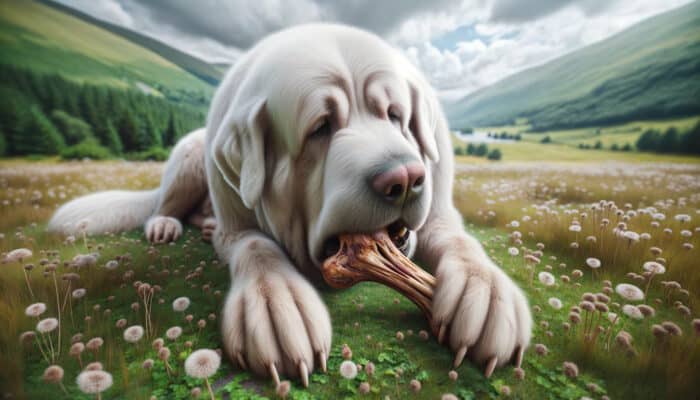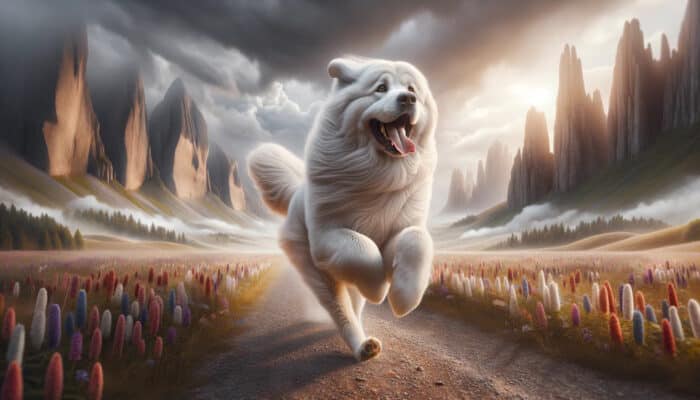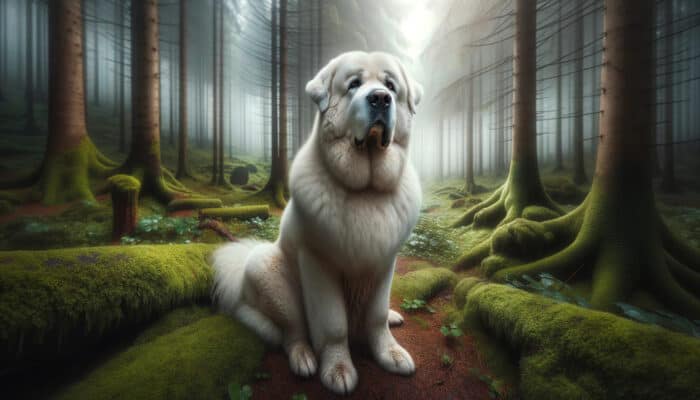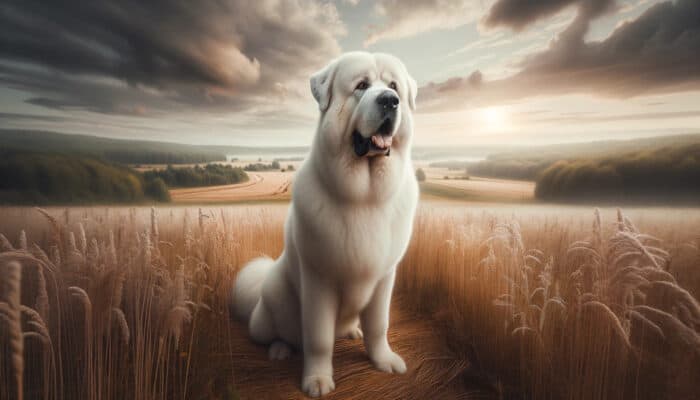The Akbash is a breed that stands out for several reasons. Originating in Turkey, this breed is known for its intelligence and protective nature. Often praised for being family-friendly, the Akbash exhibits a mix of gentleness with loved ones and wariness towards strangers.
In terms of size, the Akbash falls into the large category, with distinct physical features that make it recognizable. While not as popular globally, it holds a special place in certain regions, particularly in parts of Turkey where it’s valued for its guarding abilities.
Origin: The Akbash originates from Turkey, where it was primarily bred as a livestock guardian.
Temperament: Akbash dogs are known for their loyalty and protective nature, which makes them excellent guard dogs. Early training and socialization are essential for well-rounded behavior.
Physical Needs: Regular exercise aligns well with their active nature and working background, making it an essential aspect of their care.
Grooming: Their medium-length coat requires routine maintenance, especially during shedding seasons, to keep it healthy and tangle-free.
Health: Being a larger breed, Akbash dogs are prone to specific conditions like hip dysplasia. Regular vet check-ups are crucial for early detection and management.
Akbash Breed – Quick Facts
| Feature | Description |
|---|---|
| Size | Large; Height range: 28-34 inches (71-86 cm) |
| Weight Range | 90-130 pounds (41-59 kg); Males typically heavier than females |
| Predominant Colors | White |
| Fur Length and Type | Medium; Straight |
| Lifespan | 10-12 years |
| Activity Level | Moderate |
| Intelligence Level | High |
| Ease of Training | Average |
| Good with Kids | With Supervision |
| Training Requirements | Standard |
| Known Health Issues | Hip dysplasia, entropion, and bloat |
Physical Characteristics of an Akbash
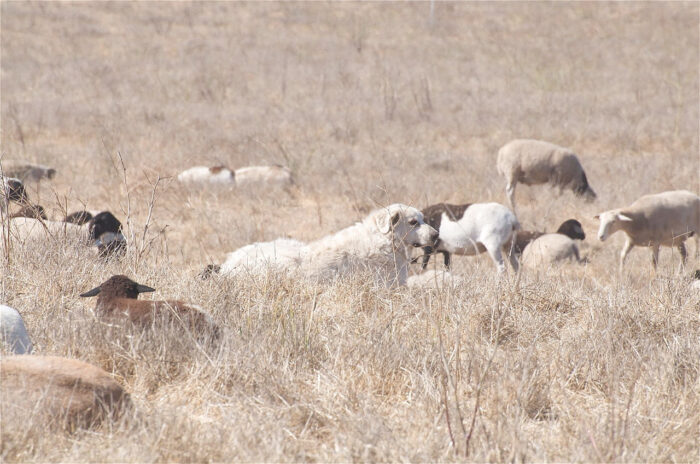
The Akbash is a large dog breed, typically weighing between 90 to 130 pounds. Males are generally heavier and can stand between 30 to 34 inches tall, while females range from 28 to 32 inches.
This breed boasts a strong and muscular build, ensuring they can perform their traditional roles as guard dogs effectively.
Their coat is predominantly white, medium in length, and has a straight texture. This white coat is not just for aesthetics; it was favored in the Akbash as it allowed shepherds to distinguish the dog from predators in the dark.
When observing an Akbash’s head, several features stand out. They possess a broad skull, which tapers down to a strong muzzle. Their ears are V-shaped, hanging down, and their eyes, often almond-shaped, exhibit a keen and alert expression.
Unique to the Akbash are their double dewclaws on their hind legs. While not a universal trait, it’s common enough to be a distinguishing feature for many within this breed.
When they move, their gait is powerful and purposeful, reflecting their historical role as a protector of flocks.
Akbash Temperament & Personality
The Akbash’s temperament is a blend of alertness, loyalty, and independence. Historically bred to guard livestock, they are naturally wary of strangers but form strong bonds with their families. This combination of traits makes them effective protectors, always ready to defend their loved ones.
When it comes to interactions, the Akbash is generally calm around familiar people and animals. However, their protective nature means they can be aloof or even suspicious towards strangers. Proper socialization is vital to ensure they can differentiate between genuine threats and benign visitors.
Their learning capability is commendable. The Akbash has a good focus and can be trained effectively, but it’s crucial to start early and maintain consistency. Positive reinforcement works best with this breed, as they respond well to encouragement and rewards.
In terms of energy, the Akbash has moderate levels. Daily exercise is essential to keep them physically and mentally stimulated. Walks, play sessions, and even tasks can be great ways to engage them.
Their adaptability is noteworthy. While they can adjust to different living situations, they thrive best in homes with ample space.
The Akbash’s gentle nature makes them compatible with family life, but interactions with very young children should be supervised.
They typically get along with other household pets, especially if introduced at a young age.
What Does The Ideal Home For an Akbash Look Like?
The Akbash, given its size and temperament, has specific needs when it comes to its living environment. A home with a large backyard or open space is ideal. This allows the dog to roam, play, and exercise, which is crucial for its well-being.
The fencing should be secure, given the breed’s protective nature and tendency to chase potential threats.
The breed fits well in various family settings. However, households with very young children should ensure supervised interactions. The Akbash’s protective instincts make them excellent guardians, but they need to be taught to differentiate between friendly visitors and potential threats.
Exercise is essential for the Akbash. Besides a spacious yard, they benefit from regular walks, play sessions, and even tasks that challenge them mentally. Without proper exercise, they can become restless or even exhibit destructive behaviors.
Can Akbash be left alone?
Akbash dogs can manage solitude better than some breeds, but like all dogs, they prefer company. While they don’t typically suffer from severe separation anxiety, prolonged isolation can lead to boredom and potentially destructive behaviors.
It’s advisable for owners to ensure the Akbash has toys or activities to keep them engaged if left alone for extended periods.
Ideal Owner for an Akbash
The Akbash is a unique breed, requiring an owner who understands and caters to its specific needs. Ideally, an Akbash owner should have some experience with dogs, especially larger breeds or those with guarding instincts.
First-time dog owners can certainly succeed with an Akbash, but they should be prepared to invest time in understanding and training the breed.
Matching the Akbash’s energy levels is essential. While they aren’t the most hyperactive dogs, they do need regular exercise. Owners should be willing to engage in daily walks, play sessions, and even some training activities to keep the dog mentally stimulated.
Training an Akbash requires commitment. Their independent nature means they might not always be eager to please, but they respond well to consistent, positive reinforcement.
A potential owner should be prepared to offer gentle yet firm guidance, ensuring the dog understands its boundaries and commands.
Time is a crucial factor. The ideal Akbash owner should be willing to spend quality time with the dog, forming a bond. This includes time for bonding, exercise, training, and even grooming, given the breed’s medium-length coat.
Are Akbash good with kids?
Akbash dogs, by nature, are protective and can be gentle giants, especially when raised alongside children. They can be patient and tolerant, but interactions between the Akbash and very young kids should always be supervised.
Proper socialization and training can further ensure that the Akbash behaves appropriately around children, recognizing them as part of their “flock” to guard and protect.
Are Akbash aggressive?
The Akbash is not inherently aggressive. However, its guarding instincts can make it wary of unfamiliar stimuli, be it people or other animals. Early socialization is crucial to help them differentiate between benign and threatening situations.
While they can be aloof with strangers, with proper training, they shouldn’t show unwarranted aggression.
Owners should be aware of the dog’s triggers and manage situations that could lead to aggressive responses, ensuring safety for all involved.
How Popular Is This Breed?
The Akbash has its origins in Turkey, where it has been appreciated for centuries as a livestock guardian. Over the years, its reputation for being a diligent protector has led to its adoption in various parts of the world.
In the USA, the Akbash is not among the most popular breeds, but it has found a niche audience. Those who value its unique combination of independence, loyalty, and protective instincts have come to cherish this breed.
Its popularity in the USA might not match that of more familiar breeds, but those who own an Akbash often become dedicated enthusiasts, appreciating the breed’s unique qualities.
In regions where livestock protection is vital, the Akbash continues to be a favored choice, a testament to its efficiency and dedication.
Akbash Grooming
Grooming is an essential aspect of Akbash care. Given their medium-length, straight coat, regular brushing is crucial to prevent matting and to keep their fur clean and healthy. Typically, a weekly brushing session should suffice, but during shedding seasons, more frequent grooming might be needed.
For the Akbash, specific grooming tools, like a sturdy bristle brush or a pin brush, are recommended. These tools effectively remove loose fur and detangle any knots. Additionally, a metal comb can be handy for addressing any mats that form, especially in the thicker regions of their coat.
While the Akbash’s coat is relatively low-maintenance, some individuals might benefit from occasional professional grooming. This is especially true if matting becomes a significant issue or if the owner is unsure about certain grooming techniques.
Grooming is not just about the coat. Owners should also regularly check the Akbash’s ears for any signs of infection or debris and clean them as needed. Their nails should be trimmed regularly, and their teeth should be brushed to prevent dental issues.
Grooming can be a bonding experience between the owner and the Akbash. However, some dogs might be sensitive or apprehensive about certain grooming activities. In such cases, it’s essential to be patient and gentle, introducing grooming tools and practices gradually.
Do Akbash shed?
Yes, Akbash dogs do shed. Their shedding pattern can be described as moderate but becomes more noticeable during the shedding seasons, typically in spring and fall.
Regular brushing can help manage and reduce the amount of loose fur in the environment, ensuring both the dog and the living space remain clean.
Akbash Diet: What Do They Eat?
Diet plays a pivotal role in the Akbash’s health and well-being. Being a large breed, their nutritional requirements are specific. A balanced diet rich in proteins, fats, and essential nutrients is vital for their growth, maintenance, and overall health.
Akbash dogs typically thrive on high-quality commercial dog food, whether it’s kibble, wet food, or a mix of both. When selecting dog food, it’s essential to choose a brand that caters to large breeds and meets the Akbash’s energy needs.
Some Akbash dogs might have food allergies or sensitivities. Common allergens include certain proteins, grains, or artificial additives. In such cases, a hypoallergenic or grain-free diet might be more suitable.
Puppies have different nutritional needs compared to adult Akbash dogs. It’s crucial to provide them with food designed for large breed puppies to ensure they get the right nutrients for growth without growing too quickly, which can lead to joint problems.
Treats can be a valuable training aid, but it’s essential to ensure they are healthy and don’t make up a significant portion of the dog’s diet.
There are many dog-friendly treats available in the market, but it’s always good to check the ingredients and ensure they align with the Akbash’s dietary needs.
How to Feed an Akbash
Feeding routines for the Akbash should be consistent and tailored to their specific needs. Given their size, they have a substantial appetite, but portion control is crucial to prevent overfeeding.
Using a large, sturdy bowl can help accommodate their portions and reduce the risk of tipping. Elevating the bowl can also aid in digestion, especially for older dogs or those with specific health concerns.
Mealtime practices are essential for healthy eating habits. The Akbash should be fed at regular intervals, typically twice a day, to maintain stable energy levels. Establishing specific feeding times can also help with training and setting a routine.
Being a large breed, the Akbash requires a higher caloric intake than smaller breeds. However, the exact amount of food depends on their age, activity level, metabolism, and overall health.
Always refer to the feeding guidelines on the dog food packaging and adjust as needed based on the Akbash’s individual needs.
Fresh water should always be available. Ensure that the water bowl is clean and refilled regularly to encourage hydration.
How Much to Feed an Akbash
Determining the right portion size is vital for the Akbash’s health. For adult Akbash dogs, the daily food intake usually ranges between 3 to 4 cups of high-quality dry dog food, divided into two meals. However, this can vary based on factors such as age, activity level, and metabolism.
Puppies have different feeding requirements. As they grow, their portion sizes will increase, and the frequency of feeding might change. It’s essential to monitor their weight and adjust portions as they mature.
Health Considerations
The Akbash, like all breeds, has specific health concerns that potential and current owners should be aware of.
One prevalent issue in large breeds is hip dysplasia, a genetic condition where the thigh bone doesn’t fit into the hip joint properly. This can lead to arthritis or even lameness if not addressed.
Another concern for the Akbash is heart conditions. Regular check-ups can help identify any potential heart issues early on, allowing for timely treatment and management.
The Akbash’s skin can also be sensitive, making them prone to certain skin conditions or allergies. Environmental factors, dietary components, or certain materials can trigger these sensitivities, so it’s crucial to be observant and address any signs of discomfort or skin issues promptly.
Regular preventative healthcare is essential for the Akbash. This includes a consistent vaccination schedule to protect against common canine diseases. Pest prevention, such as protection against fleas, ticks, and worms, is equally important.
Routine vet check-ups, at least once a year, can help monitor the Akbash’s health, identify potential issues early on, and ensure they receive timely care.
How much exercise do Akbash need?
The Akbash is an active breed, requiring regular exercise to stay healthy and mentally stimulated. Daily walks, play sessions, and even some light training activities are essential.
Given their size and energy levels, a minimum of 30 to 45 minutes of exercise per day is recommended.
Akbash Training
Training is a vital component of Akbash ownership. Given their size and natural guarding instincts, it’s essential to start training early to ensure they become well-behaved and socially adept adults.
Beginning training as puppies allows Akbash dogs to grasp basic commands and socialize effectively. Commands like “sit,” “stay,” and “come” are foundational. Consistency is key in training sessions, and positive reinforcement, such as treats or praise, can yield better results.
Socialization is equally crucial. Exposing the Akbash to various environments, animals, and people from a young age fosters well-rounded social behaviors. This helps mitigate potential aggressiveness or over-protectiveness as they mature.
While the Akbash is intelligent and can grasp commands relatively quickly, they also have an independent streak. This can sometimes make training a bit challenging. Patience and understanding their temperament are essential during training sessions.
Advanced training, like agility or even service dog training, can be beneficial for the Akbash, given their capabilities. However, it’s essential to ensure these activities align with their physical and mental needs.
House training is another significant aspect of Akbash training. Establishing a routine and being consistent can help in potty training and ensuring good house manners.
Are Akbash easy to train?
Generally, Akbash dogs are receptive to training. Their intelligence and eagerness to please make them relatively straightforward to train.
However, their independent nature can sometimes pose challenges. New owners should be prepared for moments of stubbornness and should approach training with patience and consistency.
Are Akbash smart dogs?
Yes, the Akbash is considered a smart breed. Their cognitive capabilities are evident in their problem-solving skills and quick learning speed.
Historically used as livestock guardians, their intelligence was crucial in making independent decisions while protecting herds. This intelligence, combined with their protective instincts, makes them both diligent workers and loyal companions.
What are the drawbacks of Akbash?
Every breed has its unique challenges, and the Akbash is no exception. One of the notable behavioral challenges of the Akbash is their natural guarding instinct.
While this trait makes them excellent protectors, it can also lead to over-protectiveness or aggressiveness if not managed properly.
Training and early socialization are vital to ensure they can differentiate between genuine threats and harmless situations.
From a health perspective, the Akbash, like many large breeds, is prone to certain genetic conditions such as hip dysplasia. This can lead to arthritis and pain if not addressed. Regular vet check-ups are essential to monitor and manage such health concerns.
Grooming can also be a challenge, especially during shedding seasons. Their medium-length coat requires regular brushing to prevent matting and to keep them looking their best. For some owners, this grooming requirement might be seen as high-maintenance.
Lastly, the Akbash has a significant exercise requirement. Their active nature means they need regular physical and mental stimulation.
This can be demanding for owners who might not have the time, space, or energy to cater to their needs. Without adequate exercise, the Akbash can become restless or even destructive.
Popular Akbash Mixed Breeds
Mixing breeds has become a common practice, often aiming to combine the best traits of both parents. The Akbash, with its distinct characteristics, is sometimes mixed with other breeds for various reasons, including temperamental balance or specific aesthetic goals.
A common mix involves the Akbash and the Anatolian Shepherd. This mix typically results in a dog that’s loyal, protective, and hard-working. The combination often enhances the guarding instincts while maintaining the gentle nature typical of both breeds.
Another popular mix is the Akbash and the Labrador Retriever. This blend often produces a dog with the Akbash’s protective nature but with the friendly and sociable traits of the Labrador.

